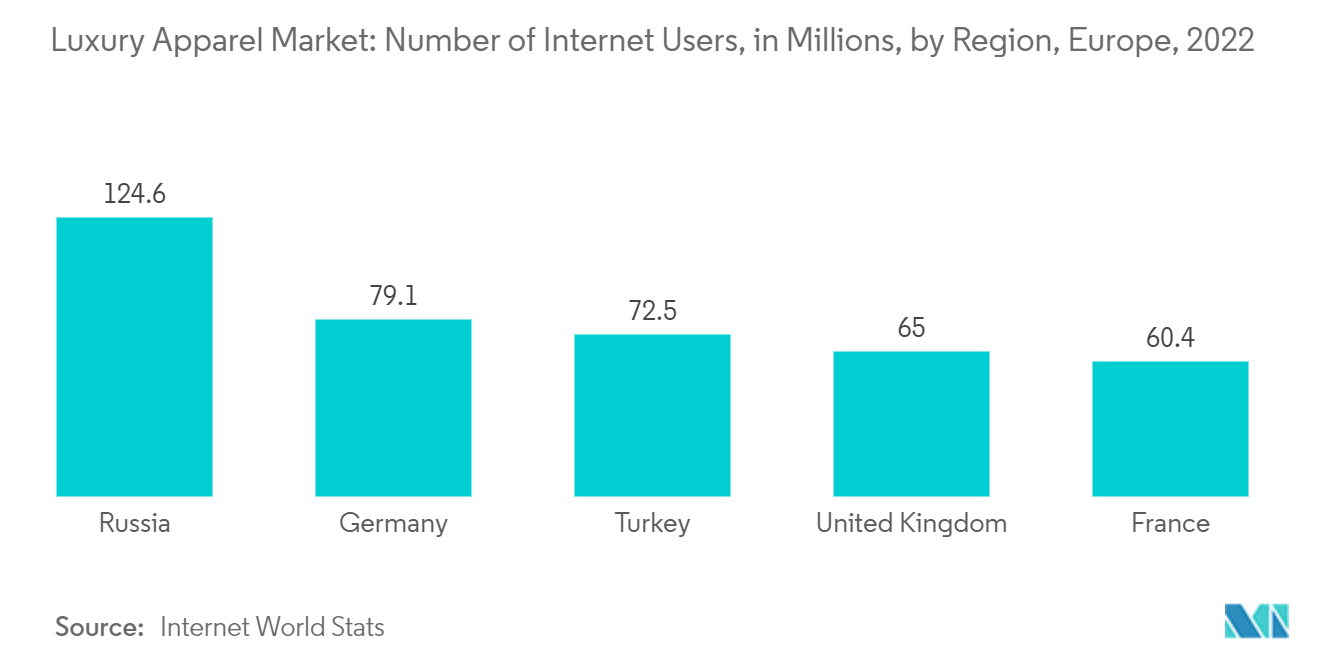Market Trends of Luxury Apparel Industry
Rise in E-commerce Boosting the Market
- The main reason behind the rise in sales through e-commerce retailing is the level of convenience that it provides consumers. Consumers can browse and shop for products 24x7. Additionally, they find it easy to choose their preferred brands and get a wide variety of apparel and related accessories per their needs and preferences. Online platforms provide more options to choose from and are convenient for consumers.
- Marketing strategies, such as the involvement of celebrities for brand endorsement, are helping key players attract more consumers from different financial backgrounds. As offline retail stores have limited growth potential over online retail stores, they will likely influence sales of luxury apparel in online retail stores over the coming years.
- Moreover, the growth of online shopping portals that can deliver high-quality products right to customers' doorsteps is another factor responsible for the rapid growth of the global luxury apparel market. The growth opportunity for apparel sales through online channels forced online vendors to improve purchase processes in terms of security and reliability, which propelled the demand for apparel products.
- There is a growing prevalence of direct-to-consumer (D2C) platforms in luxury retailing owing to consumer demand for authentic products amid counterfeiting risk. As a result, key players are increasingly launching their own websites to improve consumers' online shopping experience and provide them with the reassurance of authenticity and quality products.
- In October 2020, Hermès launched its first flagship digital store in Saudi Arabia. Soon after, the next month, the Italian brand Loro Pianaalso came up with its e-commerce platform for Saudi Arabians. Players are also introducing the concept of exclusivity via online stores by featuring online-only products, which is expected to bring greater sales through the channel.

Europe and North America Regions Leading the Global Market
- Europe is likely to hold a significant share of the luxury apparel market, followed by North America, due to the increased demand for luxury goods, including luxury apparel, in the region. The increase in the attraction of luxury lifestyles, purchasing power, and the influence of celebrity endorsement is driving market growth in Europe and North America.
- The leading global luxury apparel brands have originated from European countries, such as France and Italy, which significantly contribute to the market across the region. The European apparel industry has a reputation for its premium fashion products.
- According to Italy's fashion industry association Sistema ModaItalia (SMI), the women's ready-to-wear industry had its consecutive growth rate in the past decade due to the growing demand for convenient and comfortable clothing. Thus, womenswear is dominating Italy's market due to the excess availability of fashionable outfits.
- Key players such as Calzedonia, Miroglio, Versace, and Prada Group operate in Italy's apparel market. With increasing consumer purchasing power for clothing, the leading players are expanding their stores to meet consumer needs. According to Kering Group Financial Document, in 2021, Gucci had 107 stores in operation across Western Europe, an increase from 99 stores in 2018.


